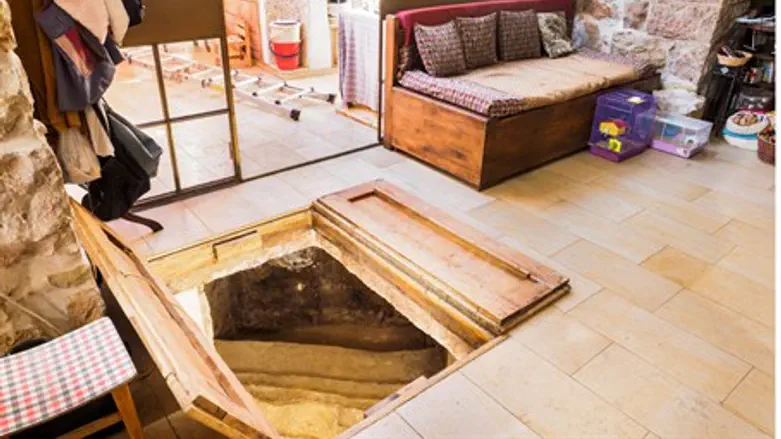
A two thousand year old ritual bath (mikve) was recently discovered beneath a living room floor during renovations of a private home in the Ein Kerem neighborhood of Jerusalem.
The mikve, fully complete and quite large, is rock-hewn and meticulously plastered according to the Jewish laws of purity. A staircase leads to the bottom of the immersion pool.
Pottery vessels dating to the Second Temple period (first century CE) and traces of fire that might constitute evidence of the Temple's destruction between 66-70 CE were discovered inside the bath.
In addition, fragments of stone vessels were found. Stone was a common material used during the Second Temple period because it cannot be contaminated and remains pure.
On Wednesday, the owners of the house were presented a certificate of appreciation by the Israel Antiquities Authority for exhibiting good citizenship by reporting the discovery of the mikve and thereby contributing to the study of the Land of Israel.
According to Amit Re'em, a Jerusalem District Archaeologist, stressed that "such instances of finding antiquities beneath a private home can happen only in Israel and Jerusalem in particular."
"Beyond the excitement and the unusual story of the discovery of the mikve, its exposure is of archaeological importance," Re'em explained. "Ein Kerem is considered a place sacred to Christianity in light of its identification with “a city of Judah” – the place where according to the New Testament, John the Baptist was born and where his pregnant mother Elisabeth met with Mary, mother of Jesus.
"Despite these identifications, the archaeological remains in Ein Kerem and the surrounding area, which are related to the time when these events transpired (the Second Temple period), are few and fragmented."
"The discovery of the ritual bath reinforces the hypothesis there was a Jewish settlement from the time of the Second Temple located in the region of what is today Ein Kerem.”